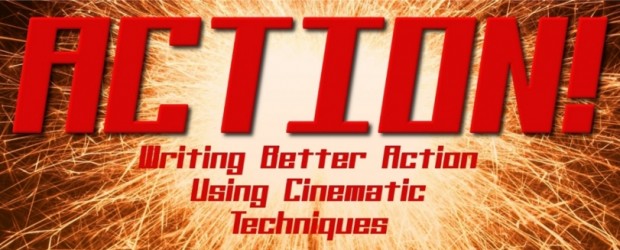Setup: Thomas is demonstrating a new invention called “Megahorse” which is a little like a Star Wars AT-AT except with 8 legs like a spider.
It’s running an illegal steam engine. Thomas is concerned that something is wrong after they fire the cannon for the first time.
[Steampunk. Me likey.]
Master Spencer ran over and pulled open the hatch. “What is the matter? Why did you power down?”
“Something is wrong in the engine,” Thomas shouted. “The cannon shot may have dislodged something.”
“Nonsense, it sounds fine. I want the maneuvering demonstration and I want it now. A cannon is no good if it cannot be moved.”
“Sir! It is not safe—”
“Or I will have your heads!” Spencer closed the latch.
Thomas sighed, replaced his helmet, raised the beast to full height, and turned toward the open field. [I think I might divide this up into two distinct sentences here, the first focusing on Thomas (sighing, replacing his helmet) and the second on the Megahorse (raising to full height and turning). Doing so would be comparable to a closeup camera shot of Thomas, followed by an external shot of the horse. What you’re showing us by doing that is that the most important things, ie: the action, is going to be what the horse does, not necessarily what Thomas as the driver does. Something to consider, at any rate.] Megahorse proceeded down the greensward. At the far end, as was their plan, he turned the machine toward the grandstand and waited, watching for the signal. It was a timed run, a half-mile at top speed. He opened the intake to maximum, and the steam engine chugged at its utmost capacity.
A flag waved near the grandstand. “Here we go! Half-speed ahead.” Thomas pushed the levers to the half-way mark. The legs swiped the ground. Megahorse lurched forward. The rattling increased. “Three quarters!” The legs whipsawed back and forth. The grandstand grew closer. “Full speed!” He jammed the levers far forward. Megahorse surged. [I want to talk a little bit about pacing here. You’re writing a section where the vehicle is accelerating, but you’re using lots of short sentences. Read it aloud. Do you pause for just a moment at every period? Most people will. Short sentences read slower, and longer sentences with multiple clauses read faster. It’s a subtle thing, but if you were to start out with the short sentences and gradually increase to longer, more complex sentences, the reader will subconsciously feel a quickening of the pace.] The ground flew behind him, the engine thundered, the legs clattered, and air roared through the viewports. [This sentence with the multiple clauses reads fast and is the first sense of speed I get in the narrative.] His flight experience estimated the ground speed at 50 knots. “All stop!”
Thomas yanked back on the levers. No response. [Now here, you have a short sentence that I feel you’ve used properly. “No response.” is a very important part of the scene. It’s Han Solo saying “Watch this!”, pulling the hyperdrive levers, and nothing happening. With this short, two-word sentence, you’ve conveyed an important point in a way that the reader will pause-even for a brief moment-and let the idea behind that sentence sink in. Nicely done!] If anything, Megahorse picked up a few knots. He wrestled the levers to no avail. The grandstand drew close, now two hundred yards and closing., directly in their path. He pulled the levers separately in an attempt to turn, and then cut the engine power, but the momentum of the beast carried it forward. “Brace for impact!”
One hundred yards. Fifty. Uniformed men scrambled off the stands which filled the view slit. They clawed each other in a mad attempt to escape. Megahorse slowed, leaning forward, but the front legs impacted the stands, jerking the machine to a stop. Shattered wood flew through the air. Straps cut into Thomas’s body and his crippled leg slammed the wall. He howled, gritting his teeth against the pain. His other charges cried out as well. For minutes, he sucked the air while his fellows gasped in pain.
“What the hell happened,” screamed Spencer, crawling into the cockpit over collapsed beams of the grandstand. Agony stole Thomas’s response. “Two men lay dead! Did you not see the stands?”
Thomas spoke through clenched teeth. “The controls failed. How are my men?”
“I took a risk with you, Putnam, and you have failed me. You are off the project. Get out of my sight!”
“I cannot move, sir.”
“Very well. Sit here and die.”
[This is a different sort of action scene than the ones I’ve critiqued in the past, and I’m glad to see someone has stepped up to submit one where the opponent isn’t another character. In this case, it’s a recalcitrant machine, and the driver is fighting to regain control of it. The scene itself is written well enough, and I don’t have any complaints about the content. If you’re narrating from Thomas’ perspective, I’d really like to see a little more focus on him battling the Megahorse’s controls – straining over the levers, spinning boiler wheels in desperation, smashing a valve open – let’s see him in the fight instead of passively riding the machine to its destruction. Doing so brings us closer to the character, because as cool as a giant steam-powered cannon-armed horse is (and the answer is: it’s extremely cool), the book must be about characters first.
Other than that, try to think more about how you can use sentence length and complexity to dictate the pacing of the scene. And because I happen to know that you’ve had an agent request this one, best of luck to you!
Thanks for submitting your scene!]
